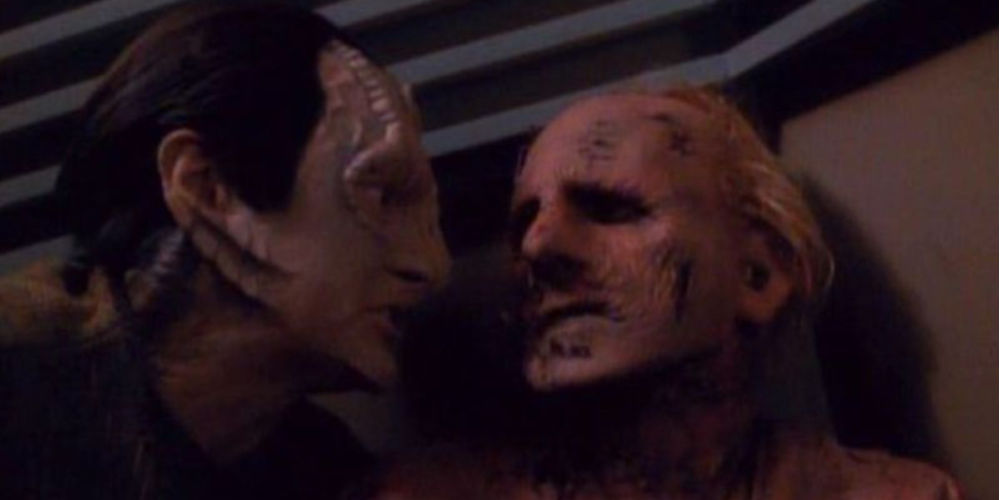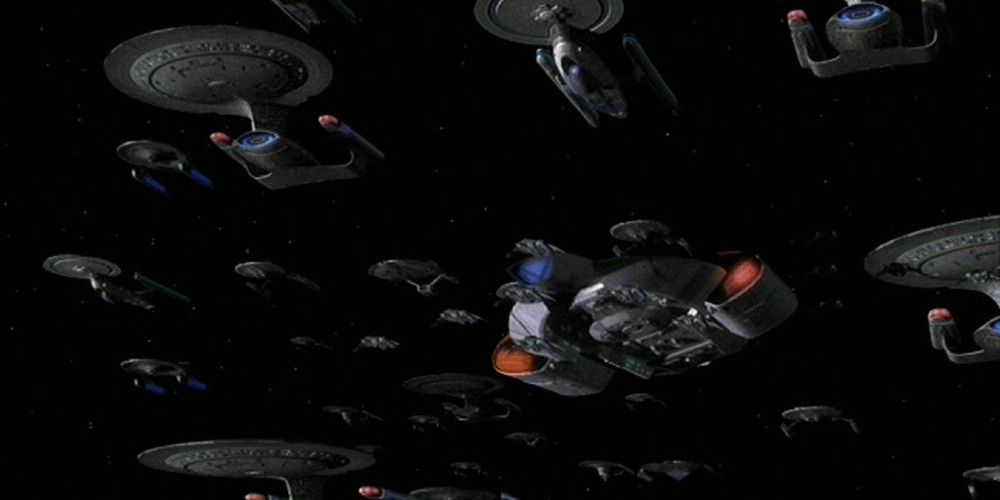Why Did Sisko Walk Down Steps Funny in Ds9
Maligned upon its release, Star Trek: Deep Space Nine has since gone on to earn a distinguished reputation among Trek fans. It explored the dark side of Gene Roddenberry's universe like no show had before it: placing its cast on a broken-down space station at the edge of the Federation where normal rules of right and wrong didn't always apply. At the time, its grim tone and exploration of moral compromise created controversy among the fans, who felt it went against Roddenberry's vision. As it turns out, it broadened the moral complexities that Star Trek excelled at. It also benefited from a planned ending, bowing out after seven seasons with a colossal storyline that had been brewing for the entire series.
The Dominion War, pitting the Federation and its allies against a seemingly unstoppable foe, became the ideal way to end Deep Space Nine. In an exciting do-or-die climax, it gave the audience a proper sense of closure and tied up the cast's various storylines.

The Dominion didn't resemble other Starfleet foes like the Romulans or Cardassians, who adopted the methods of more traditional militaristic expansion. They were a kind of theocratic fascism, whose leaders -- the shape-changing Founders -- believed that any entity they couldn't control was a threat. They built a vast empire based on the gradual subversion of any independent entity that opposed them. Their leaders impersonated key military and political figures to infiltrate the ranks of their enemies.
Deep Space Nine's conflict with the Federation began as early as Season 3 but consumed the entirety of Seasons 6 and 7 as a colossal war that ended up costing the life of series regular Jadzia Dax, forcing Captain Sisko to commit egregious breaches of morality in the name of the greater good. That came to a head in a 10-episode arc to finish the series. As producer Ira Steven Behr explained in the Star Trek: Deep Space Nine Companion, the writers' goal was to wrap up the Byzantine plot threads and end Deep Space Nine on a satisfying note.

That started with the war, which came to a conclusion in Season 7, Episodes 25 and 26, "What You Leave Behind." The Federation and its allies in the Alpha Quadrant launch a final attack against the Dominion's capital on Cardassia Prime. It succeeds with help from a resistance movement on the planet, led by Kira Nerys, but the Dominion retaliates by mass bombing the planet, killing 800 million of its residents. Meanwhile, last-minute treachery from the series' two main villains -- Kai Winn and Gul Dukat -- is thwarted when Sisko fulfills his destiny as Emissary to the Bajoran Prophets and is transported to their Celestial Temple where, as they explain, "his work is just beginning."
Sisko remains with the Prophets as the episode comes to a close. Canonically, he has yet to reappear. The fate of the rest of the cast is inferred as they go their separate ways after the episode ends. Miles O'Brien and his family return to Earth, where he'll teach at Starfleet Academy. Odo returns to the Great Link to cure his fellow Changelings of a fatal disease the Federation unleashed on them, while Kira takes up Sisko's post as the commander of Deep Space Nine. Worf accepts the Federation's ambassadorship to the Klingon Empire, though he returns to the Enterprise crew for Star Trek: Nemesis a few years later. Bashir and Ezri Dax continue their relationship while still stationed on Deep Space Nine, and Nog continues to serve Starfleet as a lieutenant. Nog's father Rom departed with Leeta to become Grand Nagus in the penultimate episode, leaving Quark (and Morn) to continue tending bar.
Deep Space Nine's ending was notable not only for managing to tie up a large number of plot threads in a comparatively brief time but simply because it was an ending. The characters felt at peace with their respective destinies. Therefore, further adventures involving them, while welcome, weren't necessary. As such, it stood in stark contrast to The Original Series and The Next Generation, which both ended on the inference that the characters' missions would continue. Deep Space Nine delivered something different for its finale, and in the process, broadened the scope of what Star Trek could be.
Source: https://www.cbr.com/star-trek-how-deep-space-nine-ds9-ended/
Post a Comment for "Why Did Sisko Walk Down Steps Funny in Ds9"